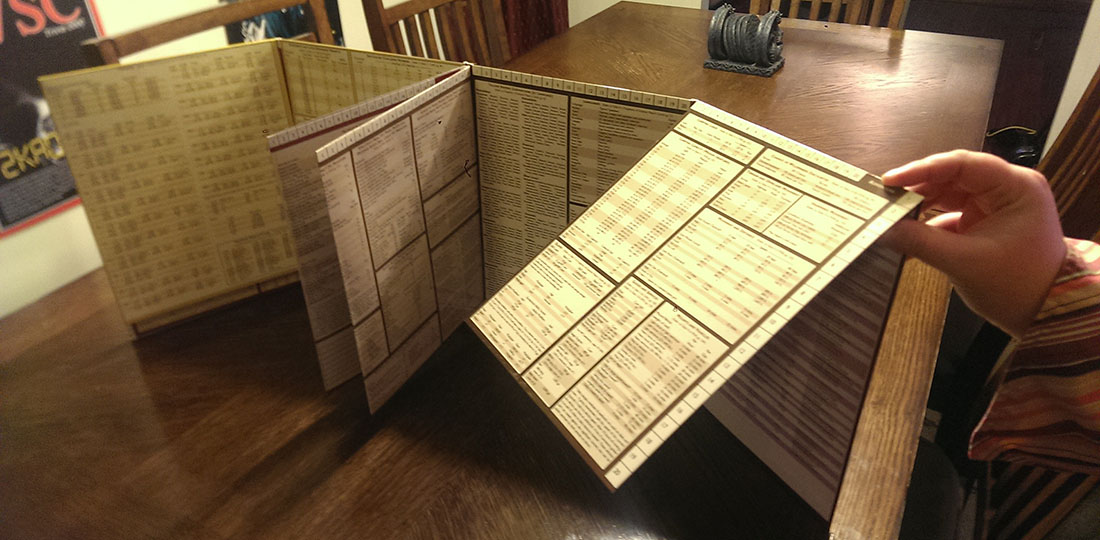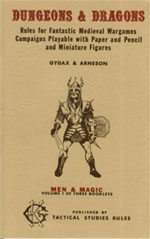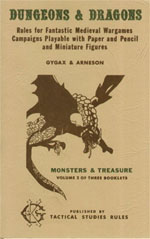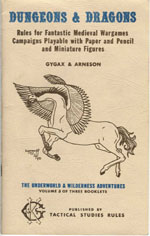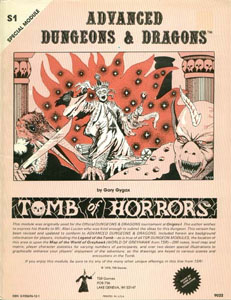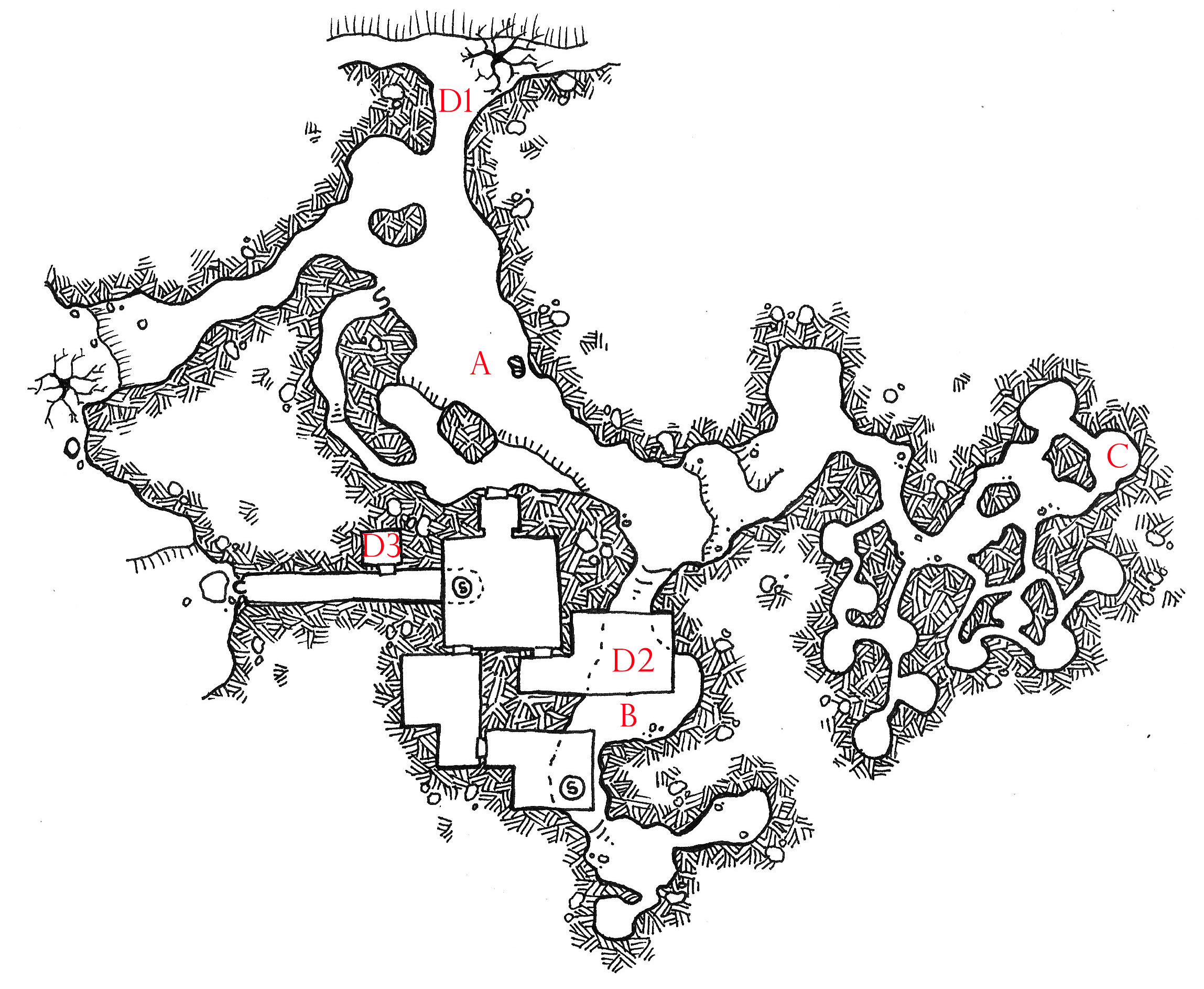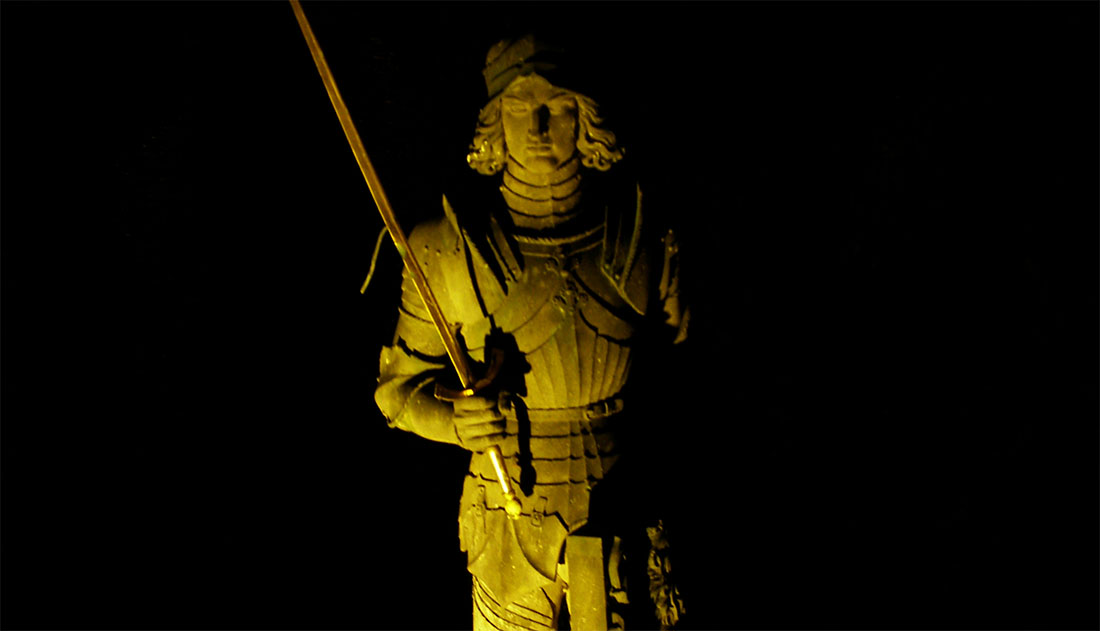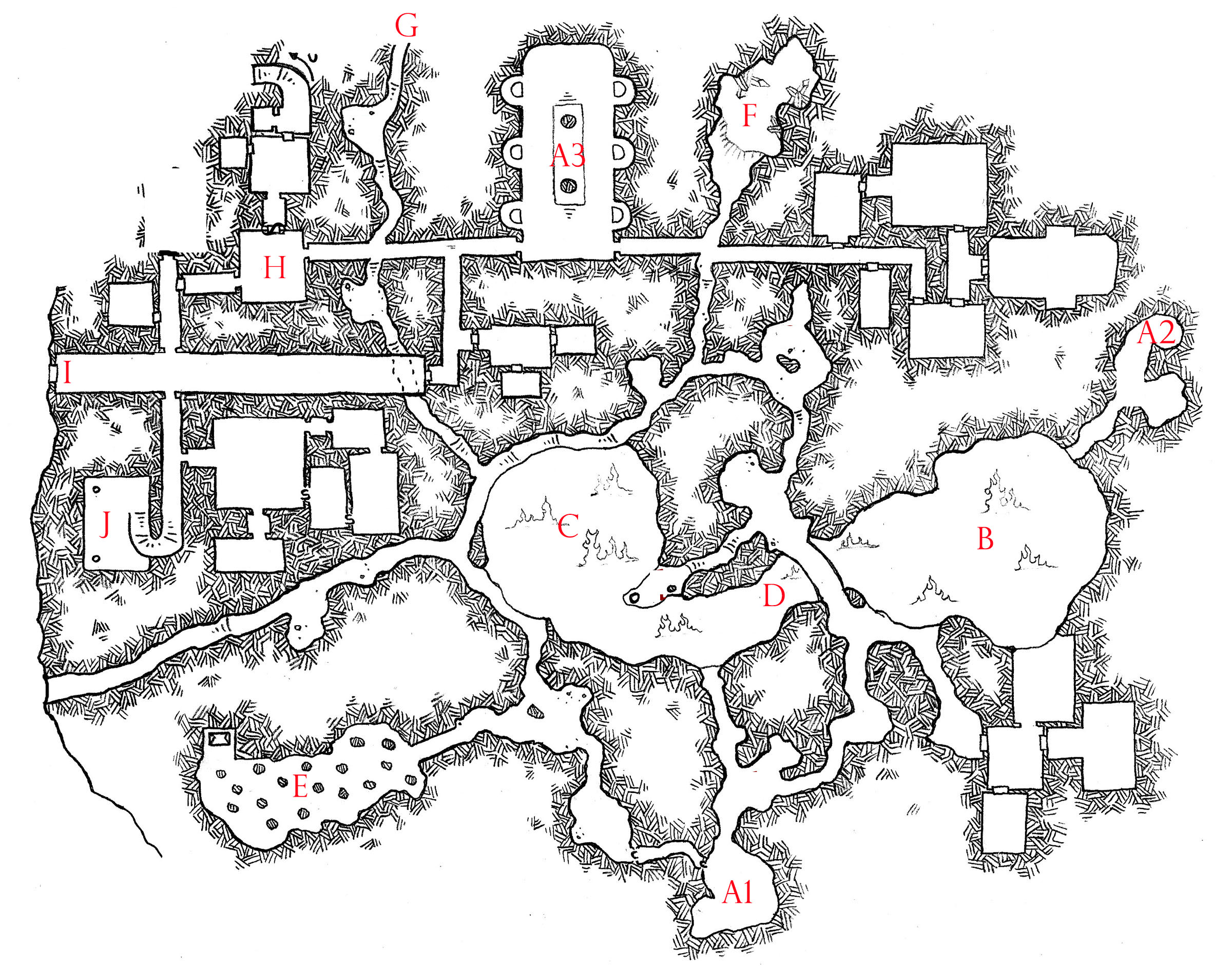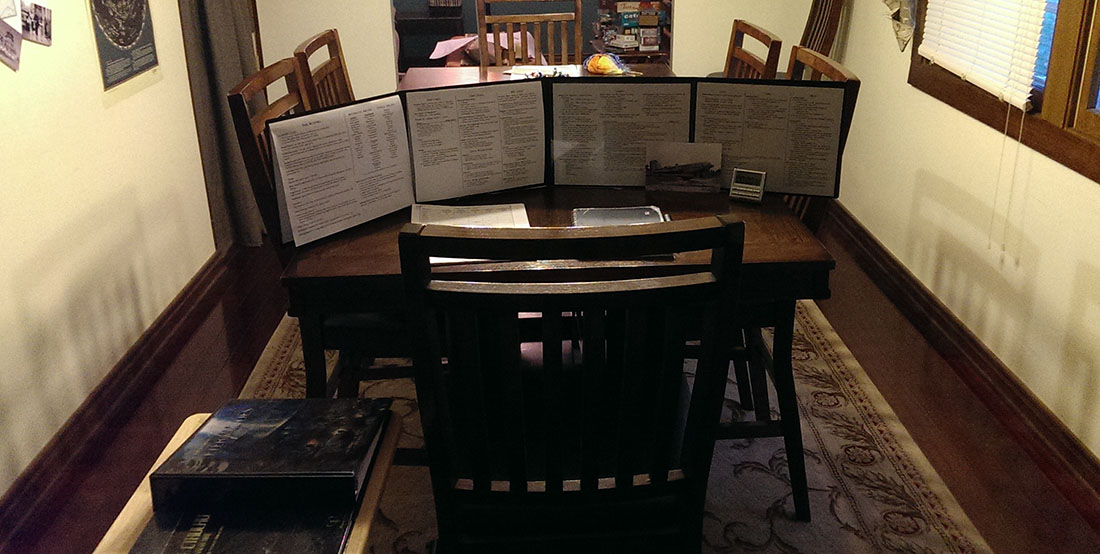
The use of a GM screen can be a surprisingly contentious subject in the running of a roleplaying game. The critics consider them superfluous at best or intrinsically damaging to the dynamic of the game (due to inducing issues of trust and social separation) at worst. But I, personally, find them valuable more often than not, and I’d like to share my thoughts on how they can be used to best effect.
First, I don’t like the older style of portrait-oriented screens. Their height does, in my opinion, create an unnatural barrier between the GM and the players. They feel like a giant wall, cutting off the natural expression of body language.
Landscape-oriented screens, on the other hand, don’t have that problem. As the GM, I can see everything that’s happening on the table and the players can freely see my body language. As long as you’re playing with a table surface, there’s no meaningful disadvantage to the use of the screen and, in my experience, there are two significant advantages.
SIGHT LINE OBSTRUCTION
The most basic function of the screen is to block the player’s line of sight to my notes and maps. This is important to me not because I think my players are horrible cheaters who are trying to peek at my notes; it’s because I consider it a common courtesy. If I’m inviting people over to watch a movie, I don’t hang a poster with spoilers for the movie next to the TV screen and ask them to avert their eyes from it.
The same principle applies here. In fact, rather than inhibiting a personal connection between me and the players, I often find that a landscape screen enhances it: When you don’t obstruct your maps and such, players will often avert their eyes from your end of the table in order to avoid glancing at them.
VERTICAL REFERENCE
I’m a pretty huge advocate of being able to simultaneously display multiple pieces of information in order to facilitate rapid referencing and cross-referencing while running the game. (This is also why I don’t like running games from a laptop: The search functionality can be useful, but being able to only look at one page of information at a time while GMing is like trying to run a marathon with your legs tied behind your back.)
Therefore, being able to position reference material in a vertical place (so that it doesn’t take up surface space) is, in my opinion, insanely useful. In addition, positioning persistent reference material for the system and/or game world on the screen creates a consistent spatial familiarity that makes referencing that material faster and more efficient. (Instead of figuring out where the cheat sheet packet is currently lying on the table, picking it up, and flipping through it, I instead know that I can reach out to my right, flip up a piece of paper, and look directly at the skill difficulty guidelines. After just a couple of sessions, I basically don’t even have to think about it any more. It becomes autonomic.)
My typical table arrangement when GMing is:
- A customizable, landscape GM screen with four panels of information.
- 2-3 pieces of paper displayed behind the screen.
- One or more TV trays to my left side, which I use to hold my rulebooks and also display 4-6 additional sheets of information (which often includes one or more rulebooks flipped open to the appropriate page reference).
Without the GM screen, my quick reference material not only becomes less efficient, it also begins encroaching into the space I use for other reference material. This becomes a cascading problem, as useful resources get bumped out of circulation. With less information at my fingertips, it becomes more difficult to run complicated, interconnected scenarios.
MAKING THE SCREEN
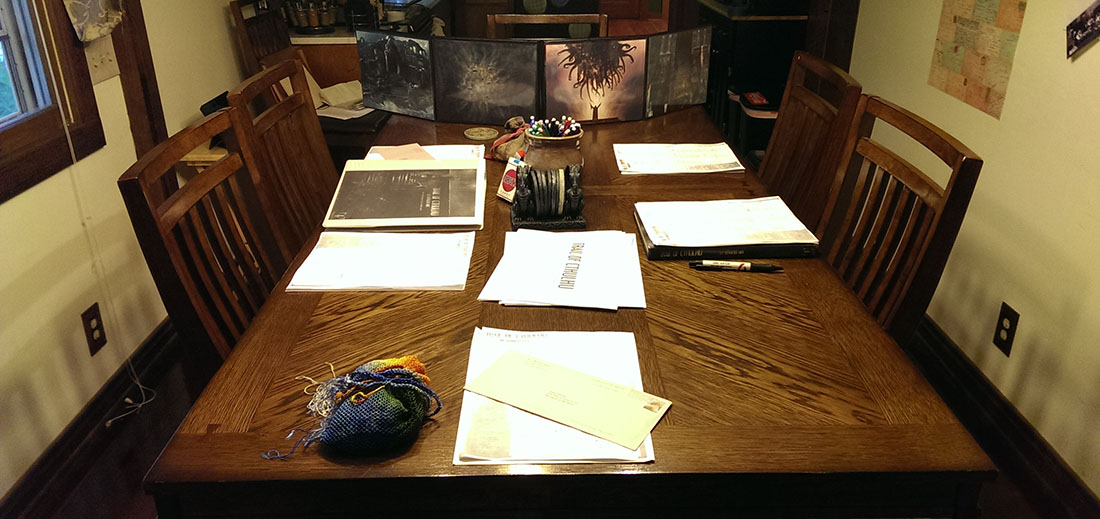
As useful as the reference material on a GM screen can be, the sad reality is that most published GM screens feature a lot of non-essential information while not including material that would actually be useful when running the game. As a result, I use a modular, customizable landscape (like the ones you can buy here or here).
IMAGES: Buying the PDF version of an official landscape screen is often a good way to stock the player-facing side of your screen. But in an era of Google Image Search, the whole world of art and photography is your playground.
Personally, I tend to avoid trying to find single mural-style images that will go across the entire breadth of the screen. Finding multiple images to make up a polyptych is easier, and it also gives you the opportunity to highlight multiple facets of the game / world / campaign. I also recommend finding images that depict things the PCs could theoretically see, rather than images of main characters who aren’t the PCs doing awesome things. (It’s more immersive and suggestive of the game world that way, while allowing the table to remain focused on the narrative you’re creating instead of some other narrative that’s being depicted.)
(In the past I’ve also played with stocking the player-facing side of the screen with player-relevant reference material. But I’ve found that reading the material at any meaningful distance is usually difficult and, for players (who usually juggle less reference material), it’s easier to just use cheat sheet packets. Your mileage may vary.)
REFERENCE MATERIAL: I design System Cheat Sheets for many of the RPGs I run, particularly those featuring complicated mechanics. These reference sheets can then be conveniently slid into the modular screen.
A major conceptual breakthrough for me was the Hackmaster GameMaster’s Shield, which included flip-up panels:
Copying this same technique, I now use reverse-duplex printing to create sheets that I can tape together and flip up to reveal additional information behind them. This allows me to easily put 12 landscape-formatted sheets within easy reach. (And there’s no reason I couldn’t expand that to a third layer of information to give me 20 sheets, although I haven’t actually found a game so complicated that I would need to do that yet.)
FURTHER READING
Rolling Behind the Screen

